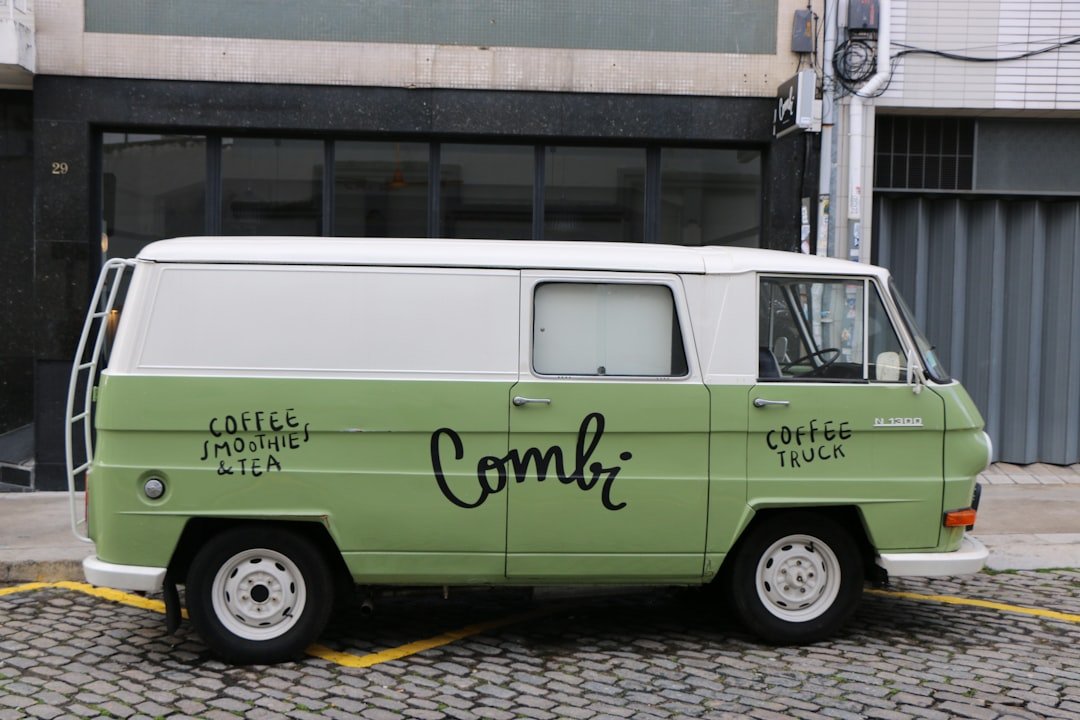Starting a Coffee Truck: A Step-by-Step Guide

When starting a coffee truck business, the first step is to determine your target market and location. Research the demographics of the area you plan to operate in, including the age, income, and preferences of potential customers. Consider whether you will focus on office workers in the business district, students on a college campus, or residents in a specific neighborhood. Understanding your target market will help you tailor your menu and marketing strategy to appeal to their preferences.
Next, it’s crucial to research local regulations and permits for operating a coffee truck. Each city or county may have different requirements for food truck businesses, including health and safety regulations, zoning laws, and parking restrictions. Contact the local health department and business licensing office to understand the necessary permits and inspections needed to legally operate your coffee truck.
Creating a business plan is essential for the success of your coffee truck. This plan should include a detailed budget outlining your startup costs, monthly expenses, and projected revenue. Consider expenses such as purchasing or leasing a truck, equipment, supplies, permits, and marketing. Additionally, develop a marketing strategy to promote your business and attract customers. This may include social media marketing, partnerships with local businesses, and special promotions or events to generate buzz around your coffee truck.
Choose a Concept and Menu:
Deciding on the type of coffee and other beverages you will serve is a crucial aspect of your coffee truck business. Consider whether you will focus on specialty coffee drinks, such as lattes, cappuccinos, and cold brew, or if you will offer a variety of traditional coffee options. Additionally, think about incorporating non-coffee beverages such as teas, hot chocolate, or smoothies to appeal to a wider customer base.
Developing a menu that complements your coffee offerings is essential for creating a well-rounded selection for your customers. Consider offering a variety of pastries, breakfast items, and snacks that pair well with coffee. This could include muffins, croissants, bagels, and healthy options such as yogurt parfaits or fruit cups. Providing a diverse menu will attract customers looking for a quick breakfast or snack to accompany their coffee.
To set your coffee truck apart from the competition, consider any unique selling points or specialty items that will make your business stand out. This could include signature drinks that are exclusive to your truck, using locally sourced or organic ingredients, or offering customizable options for customers. Additionally, think about any seasonal or limited-time offerings that will create excitement and encourage repeat business from your customers.
Obtain Necessary Permits and Licenses:
Once you have determined your target market, location, and menu, it’s time to obtain the necessary permits and licenses to legally operate your coffee truck. This includes applying for a food truck permit and business license from the local government. The process for obtaining these permits may vary depending on the city or county, so it’s important to research the specific requirements for your area.
In addition to the basic permits, you will need to obtain health department permits and inspections to ensure that your coffee truck meets food safety standards. This may include regular inspections of your equipment, food handling practices, and cleanliness of the truck. It’s essential to maintain compliance with health regulations to protect the health of your customers and avoid fines or shutdowns of your business.
Depending on the locations or events you plan to operate at, research any additional permits required. Some cities may have specific regulations for operating in parks, at festivals or farmers’ markets, or near schools. Understanding these additional permit requirements will ensure that you can legally operate your coffee truck in various locations and events throughout your community.
Purchase Equipment and Supplies:
| Category | Metrics |
|---|---|
| Equipment | Number of units purchased |
| Supplies | Total cost |
| Inventory | Stock levels |
Investing in high-quality equipment is essential for running a successful coffee truck business. This includes purchasing a commercial-grade espresso machine and coffee grinder to ensure that you can consistently produce high-quality coffee beverages for your customers. Additionally, consider the need for a generator to power your equipment, water tanks for fresh water supply, and refrigeration for storing milk and other perishable ingredients.
In addition to equipment, it’s important to purchase necessary supplies such as cups, lids, stirrers, napkins, and condiments. Consider whether you will offer environmentally friendly options such as compostable cups and straws to appeal to eco-conscious customers. Having a well-stocked inventory of supplies will ensure that you can efficiently serve your customers without running out of essential items.
When purchasing equipment and supplies, consider establishing relationships with vendors to secure competitive pricing and reliable delivery of products. This may include working with local coffee roasters for fresh beans, bakery suppliers for pastries, and wholesale distributors for paper goods and condiments.
Build and Design Your Truck:
Working with a professional to design the layout of your coffee truck is essential for creating an efficient workspace that maximizes productivity. Consider the placement of equipment, storage areas for supplies, and customer service areas to ensure that your staff can work seamlessly during busy periods. Additionally, think about incorporating branding and signage into the design to attract customers and create a memorable visual identity for your business.
Ensuring that your truck is equipped with proper safety features is crucial for protecting both your staff and customers. This includes fire extinguishers, first aid kits, non-slip flooring, and proper ventilation for cooking equipment. It’s important to meet health codes and safety regulations to prevent accidents and maintain a clean and safe environment for food preparation.
When designing your truck, consider the overall aesthetic and branding that will appeal to your target market. This may include incorporating your logo, color scheme, and messaging into the exterior design of the truck to create a cohesive and recognizable brand identity. Additionally, think about how you can use the space around the truck for outdoor seating or promotional signage to attract customers.
Marketing and Promotion:

Creating a strong online presence through social media and a website is essential for reaching your target audience and building a loyal customer base. Use platforms such as Instagram, Facebook, and Twitter to share engaging content such as photos of your drinks and food items, behind-the-scenes glimpses of your business, and promotions or special events. Additionally, consider creating a website with information about your menu, locations, hours of operation, and contact information.
Developing a marketing plan will help you effectively promote your coffee truck to potential customers. This may include strategies such as offering loyalty programs or discounts for repeat customers, partnering with local businesses for cross-promotions, or sponsoring community events or sports teams. Consider how you can differentiate your marketing efforts from other coffee businesses in your area to stand out and attract new customers.
Consider partnerships with local businesses or events to increase visibility and attract new customers. This could include collaborating with nearby offices for regular coffee deliveries, participating in food truck festivals or farmers’ markets, or sponsoring community events such as charity runs or concerts. Building relationships with other businesses and organizations will help increase awareness of your coffee truck and attract new customers.
Launch and Operations:
Planning a grand opening event is an excellent way to generate buzz around your coffee truck and attract new customers. Consider offering special promotions or free samples during the grand opening to encourage people to visit your truck and try your products. Additionally, use this opportunity to engage with customers, gather feedback, and create a positive first impression of your business.
Developing a schedule for regular locations and events will help you establish a consistent presence in the community and build a loyal customer base. Consider operating at popular morning locations such as office buildings or transit hubs during weekdays, as well as weekend events such as farmers’ markets or sports tournaments. By being strategic about your locations and hours of operation, you can maximize visibility and attract a steady flow of customers.
Training staff on customer service and efficient operations is essential for delivering a positive experience to your customers. Provide thorough training on preparing drinks, handling transactions, engaging with customers, and maintaining cleanliness and organization in the truck. By investing in well-trained staff, you can ensure that every customer interaction is friendly and efficient, leading to repeat business and positive word-of-mouth recommendations.
In conclusion, starting a coffee truck business requires careful research and planning to ensure success. By understanding your target market, developing a unique concept and menu, obtaining necessary permits and licenses, purchasing high-quality equipment and supplies, designing an attractive truck, implementing effective marketing strategies, and planning a successful launch and operations strategy, you can create a thriving coffee truck business that delights customers and contributes positively to the community.
If you’re interested in starting a coffee truck, you may also want to check out this article on how to create a successful digital marketing strategy for your food truck business. This article offers valuable insights into leveraging social media, email marketing, and other digital tools to attract and engage customers. You can read the full article here.
FAQs
What is a coffee truck?
A coffee truck is a mobile coffee shop that serves a variety of coffee drinks and sometimes light snacks. It is a convenient way for coffee lovers to get their caffeine fix on the go.
What are the benefits of starting a coffee truck?
Starting a coffee truck can be a more affordable option compared to opening a traditional brick-and-mortar coffee shop. It also allows for flexibility in terms of location and target market, as the truck can be moved to different areas based on demand.
What are the basic requirements to start a coffee truck?
Basic requirements to start a coffee truck include obtaining the necessary permits and licenses, purchasing or leasing a suitable truck, and equipping it with the necessary coffee-making equipment and supplies.
What are some popular coffee drinks to offer on a coffee truck?
Popular coffee drinks to offer on a coffee truck include espresso, cappuccino, latte, macchiato, americano, and various flavored coffee drinks. Additionally, offering options for non-coffee drinkers such as tea and hot chocolate can also be beneficial.
How can I attract customers to my coffee truck?
Attracting customers to a coffee truck can be done through effective marketing and branding, offering high-quality and unique coffee drinks, providing excellent customer service, and choosing strategic locations to park the truck based on foot traffic and demand.





